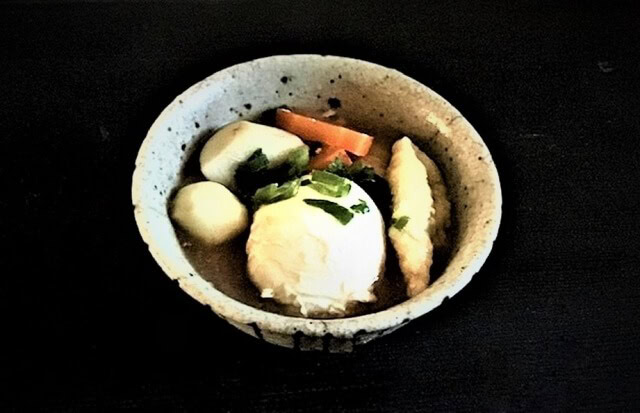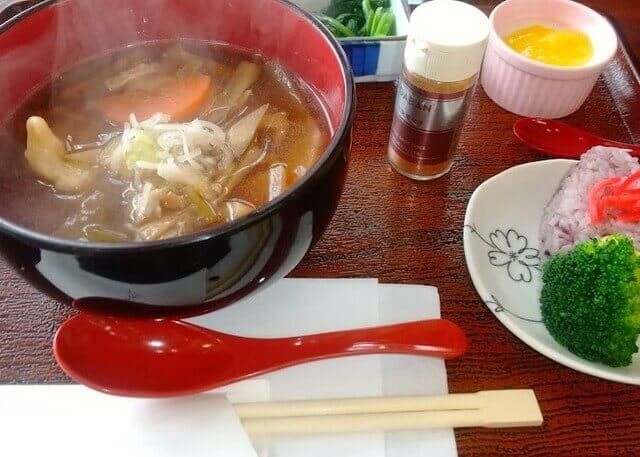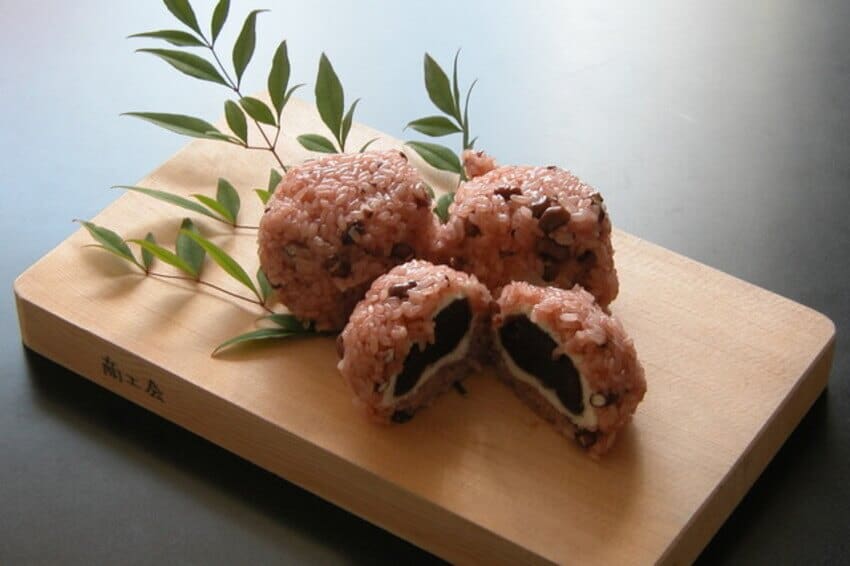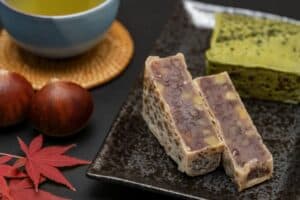Explore the delightful world of Suiton in Japan, a traditional dish made with flour and water, simmered into tasty bite-sized pieces in savory soup. With various regional names and unique recipes, Suiton reflects Japan’s diverse culinary heritage. This article unfolds the story behind Suiton’s history, regional nuances, and cultural significance, offering a flavorful journey that’s sure to captivate your taste buds and curiosity. Join us in discovering the simple yet fascinating allure of Suiton!
What is Suiton?

Suiton is a dish originating from Gunma prefecture, created by turning flour dough into small pieces through methods like shredding, rolling, or scooping with a spoon, followed by boiling in soup. To make Suiton, locals added water to flour, creating a dumpling-sized dough that is then boiled in soup. Locals made this type of dumpling with gluten-containing grains or nuts ground into powder, mixed with water, and dropped into hot water or soup. How it’s served varies based on the cook’s effort, ingenuity, or local customs. There are different variations, including simple ones resembling dango made by kneading with water and dropping into hot water, and zoni-style ones prepared with miso soup or clear soup.
Suiton History

The word “Suiton” has theories suggesting it originates from “taking and throwing” flour in water or “dad stirring the pot.” Also known by other names like “Tsumerikko,” “Otsuyu Dango,” and “Nejikko,” each reflecting the unique culture of different regions. The term “suidan” first appeared around the Nanbokucho period, but its exact culinary meaning remains unclear. The preparation method for Suiton evolved, and the hand-made wheat flour format we know today emerged in the late Edo period. During the Edo period to the pre-war era, there were specialized stalls and restaurants for Suiton, making it a popular taste among the common people. In the mid-Taisho era, the number of Suitonya decreased, but after the Great Kanto Earthquake, Suitonya emerged in the burnt-out areas, reflecting the challenging food situation at the time.
In Gunma, a region known for practicing double crops of rice and wheat, the production of wheat flour has a long history, leading to the popularity of various flour-based dishes like okirikomi and Manju as local cuisine. One such dish is “Suiton,” made by dissolving flour and water. Although Suiton is made throughout Gunma, the ingredients and names may vary by region. For instance, Ota City’s version often uses rice flour, while in Fujioka City, it is called “Tochanagejiru” despite being made with wheat flour.
Name

The term “Suiton” locals used across Japan, but its name changes depending on the region, such as “Hittsumi,” “Hatto,” “Tsumeri,” “Tottenage,” “Tochanage,” “Odansu,” “Hinnobe,” and “Dagojiru.” Each region has unique ingredients, soup stock, and cooking methods, making these suiton-like dishes distinct local specialties. Even within the same region, households may have different cooking methods and dish names. In general, suiton dishes can be broadly categorized into soy sauce or miso flavors, and variations in flavor can also arise from different water amounts or preparation techniques, such as using a spoon, tearing by hand, shaping manually, or otherwise.
Peace Learning Day at Suiton

Established by Suiton no Kai, engaged in grassroots peace activities in Inuyama City, Aichi Prefecture, the Peace Day has its roots on August 15, 1945 (Showa 20), marking the beginning of enduring peace. This significant day serves as an opportunity to educate about peace, especially for children. The organization discusses the senselessness and sorrow of war and atomic bombs while sharing a meal of “Suiton,” a substitute food during wartime, to illustrate food shortages and emphasize the importance of peace. Japan Anniversary Association officially recognized the anniversary. Across Japan, on this day, people indulge in wartime sweets and participate in events to remember past wars.
Suiton FAQ
- Seasons for eating suiton
Suiton became a go-to choice when rice was scarce, particularly during times of food shortages. Compared to other local wheat flour dishes, it gained popularity as an easy-to-enjoy everyday meal since there’s no need for complicated kneading or cutting of the dough. People loved it not only for its simplicity but also because it was effortless to make – just by mixing flour with water.
- How to eat suiton?
To enjoy Suiton, start by adding vegetables you have at home, cut into bite-sized pieces, to a broth made from dried sardines, and let it simmer. Adjust the flavor with soy sauce or miso. Next, mix flour dissolved in water with a spoon, shape it into a ball, and boil it for a few minutes – that’s it! Feel free to customize it by adding your favorite vegetables.
Suiton Recipe

Suiton Ingredients
| Ingredients of Suiton for 4 persons | Measurements |
|---|---|
| Flour | 150g |
| Water | 150g |
| Japanese white radish | 60g |
| Carrot | 40g |
| Satoimo | 46g |
| Shiitake mushroom | 50g |
| Green onion | 6g |
| Fried tofu | 30g |
| Soy sauce | 35g |
| Sweet sake | 14g |
| Dashi soup | 60g |
How to make Suiton?
Knead the flour with water (so that it is hard enough to be scooped out with a spoon).
Cut the vegetables into bite-sized pieces and boil them in dashi stock. Pour the stock into a pot, add the vegetables and bring to the boil.
When the vegetables are about 70% soft, add the fried tofu.
When it boils, add mirin and season with soy sauce.
Where to buy Suiton?
Usaburo Chaya (茶屋 卯三郎)

Chaya Usaburo is a well-loved restaurant known for its delicious rice and mochi rice cake dishes. They use a special sticky rice called “Nasu Shiratori Rice,” carefully cultivated by local farmers in the Nasu area. The restaurant has a cozy and nostalgic atmosphere, resembling a countryside home, making visitors feel like they’re at their grandparents’ place. One of their standout dishes is “Baaba no Suiton,” featuring a hearty mix of vegetables and chunky suiton. True to its name, this dish captures the gentle and comforting taste of the countryside, perfectly complementing the suiton.
Nasutran (道の駅那須高原友愛の森 なすとらん)

“Nasutoran” is a restaurant found at a roadside station, and they pride themselves on offering a menu that captures the comforting flavors of home. Using ingredients sourced locally from Nasu. One of their special dishes is the “Na・Suiton Set Meal,” available only during the winter season. This delightful treat features a smooth and mild taste, created with miso made from fresh milk from the Nasu Highlands. Packed with seasonal vegetables, it’s a satisfying and hearty meal to warm you up during the colder months!
Nasu Fune Restaurant Morimoriya (那須船のレストランもりもり屋)

Morimoriya, true to its name, designed like a ship, and known for its spicy menu. A highlight is their “Fire Ramen,” and they’ve even given a spicy twist to sweeton! When you order the sweeton set meal, choosing the fire flavor adds a kick of spiciness. They also offer soy sauce, salt, and miso flavors, making it enjoyable to compare them. During the chilly mid-winter, warm up your core with the fiery option! Nasu offers a variety of sweeton across different stores, making it exciting to explore and try them all on a trip. After a satisfying meal, consider burning off some energy by engaging in outdoor activities in Nasu, which you can check out at “Soto Asobi,” where you can reserve various activities!
Takeaway

In conclusion, Suiton holds a special place in Japanese cuisine, offering a comforting and versatile dish with regional variations. Whether enjoyed as a substitute during times of scarcity or cherished as a traditional meal, Suiton reflects the rich culinary heritage of Japan. From the simple joy of mixing flour and water to the diverse ways its prepared across different regions, Suiton not only satisfies taste buds but also tells stories of resilience and creativity in the face of challenges. So, the next time you savor a bowl of Suiton, remember that you’re experiencing more than just a delicious dish.
You can find out more about Japanese soup!
















Comments